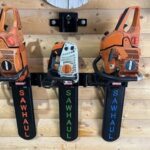Through my years in the fintech and restaurant tech industries, I’ve witnessed firsthand the transformative impact of technology on the retail and food service industries. Today, as we navigate a landscape marked by rising labor costs and personnel shortages, the adoption of self-service technology isn’t just an option, it’s becoming a necessity.
The Changing Face of Retail Due to Labor Dynamics
The retail and food service sectors are undergoing a significant metamorphosis. Rising labor costs and staff shortages are challenging traditional business models. In response, forward-thinking, customer service- and experience-driven businesses are turning to technology, particularly self-ordering systems like kiosks and online platforms that incorporate artificial intelligence and automation, to bridge the gap. These systems not only reduce the strain on human resources, but also streamline operations and increase revenue, leading to improved efficiency, customer satisfaction, and accomplished business goals.
The Rising Popularity of Self-Service Technology
The surge in self-service technology’s popularity isn’t just a reaction to labor challenges; it’s part of a broader shift toward digitalization. Today’s consumers, especially younger demographics, prefer swift, tech-driven solutions that offer convenience and control. Self-ordering kiosks and online ordering platforms cater perfectly to this preference, enabling customers to browse, customize, and pay for their orders with ease. Moreover, these technologies gather valuable data, allowing businesses to tailor their offerings and enhance the customer experience.
Implementing Self-Service Technology in Businesses
For businesses looking to implement self-service technology, especially in the face of higher wages and staff shortages, the key is successful integration. It’s crucial to ensure that these systems are seamlessly integrated into existing operations, meaning factors like user interface, compatibility with payment systems, and the ability to handle peak traffic are all taken into consideration. Training staff to assist customers in using these systems and troubleshoot any issues is equally important in the modern-day shift of the traditional retail associate role. An effective integration not only maximizes efficiency but also ensures a smooth transition for both employees and customers.
Expectations for the Retail/Dining Sector in the New Norm
As businesses adjust to this new norm, the expectations for the retail and dining sector are high. We anticipate a more technology-driven, customer-centric landscape. Self-ordering systems will become more sophisticated, offering personalized experiences based on customer preferences and past purchases. Additionally, these systems will increasingly incorporate AI and machine learning to enhance decision making and operational efficiency.
The shift towards self-service technology is a pivotal moment for the retail and dining industries. It’s an opportunity to adapt, innovate and thrive in a rapidly evolving market.
Sam Zietz is the CEO and co-founder of GRUBBRR, a provider of self-ordering systems and kiosk software solutions.
View Original Article

















